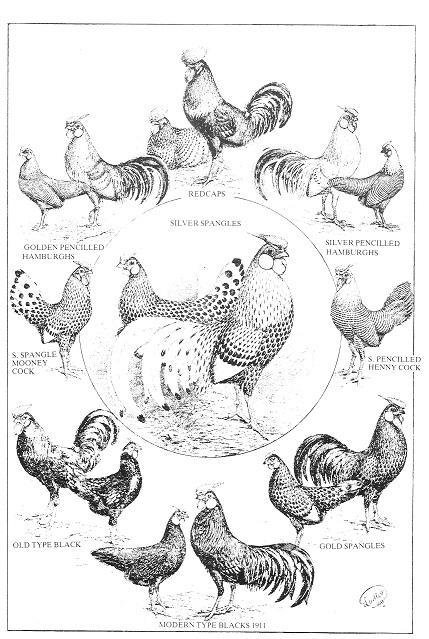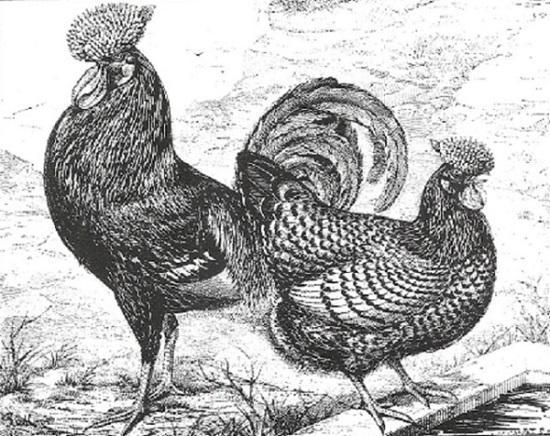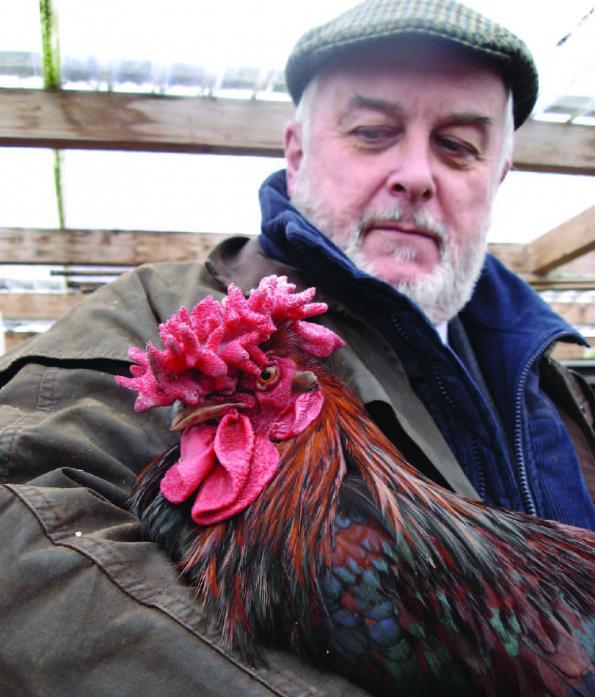Getting much information on the very rare Redcap breed can be hard to find these days. The information below is out of
The Illustrated Book of Poultry by
Lewis Wright.
REDCAPS - Most of the early books describe amongst the varieties of Hamburghs a breed know as the Redcap, which is undoubtedly closely allied to one of those described under the preceding head. These Redcaps have also been know as "Manchesters", Moss Pheasants, and some other synonyms besides those mentioned below.
Many years ago, as Redcaps, they used to have classes at the Sheffield shows, but subsequenly dropped out, until more recently revived. They always had a very high reputation amongst those who knew them, as useful fowl and the late Mr Hewitt wrote highly of them. He mentioned in particular the much better carcase, cocks reaching 71/2 lbs to 9lbs, while the meat was tender and delicate; and the fact that if equal weights of eggs from Spanish and Redcaps were used in custard making, the Redcap eggs went nearly a third further than the other.
The following short account of Redcaps is kindly supplied by Mr Albert E. Wragg, of Edensor, Bakewell, who has been largely instrumental in promoting the interests of the variety, and bred them for many years:
"The Redcap is one of our oldest breeds of fowls. It has been kept for a great many years in the counties of Derbyshire and Yorkshire, were it has always been most highly thought of, especially for its laying qualities. Recently, however, it has become better know, and it is now largely kept in the United States, Australia, New Zealand, France, Germany, and Belgium. It is generally supposrd to have originated in Yorkshire, and is probably a near relation to the Golden-spangled Hamburgh, having been bred more for size and the large comb. Game blood undoubtedly enters into its composition, as the breed is a very pugnacious one, and a dubbed Redcap cock might almost be taken for an Ond English Game cock. It has been know by many different names, such as Pheasant Fowls, Crammers, Copper Fowls, Yorkshire and Derbshire Redcaps.
"The Redcap cock is a fine-bodied bird of noble appearance. Nothing could be more ornamental than his large, symmetrically-shaped comb, full of a great number of fine long spikes, with leader behind. It should be well carried, firm and straight, and standing well off the eyes. For years Redcaps were bread with very ugly combs - and some are yet to be seen winning prizes - and to this fact may be attributed much of the unpopularity of the breed in many parts of this country. The comb should be as large as can be comfortably carried by the bird. In size it should not greatly exceed five and a half inches in length and three and three-quarter inches in breadth. Birds with ugly combs should not be used for breeding. Frost seldom injures the large combs of Redcaps, for I have had birds roosting in plantations with 26* of frost, and not one has suffered in the slightest degree. The hen is a shapely bird, very active, and a good forager, and as a layer is second to none. She will generally lay from 150 to 200 eggs per year. Redcaps are long-lived birds, and very hardy, and hens three and four years old will frequently lay as many eggs as a pullet. The eggs are white, or slightly tinted, very rich, and of a beautifully delicate flavour, and of good size, weighing about 2 ozs. The hens rarely go broody".











